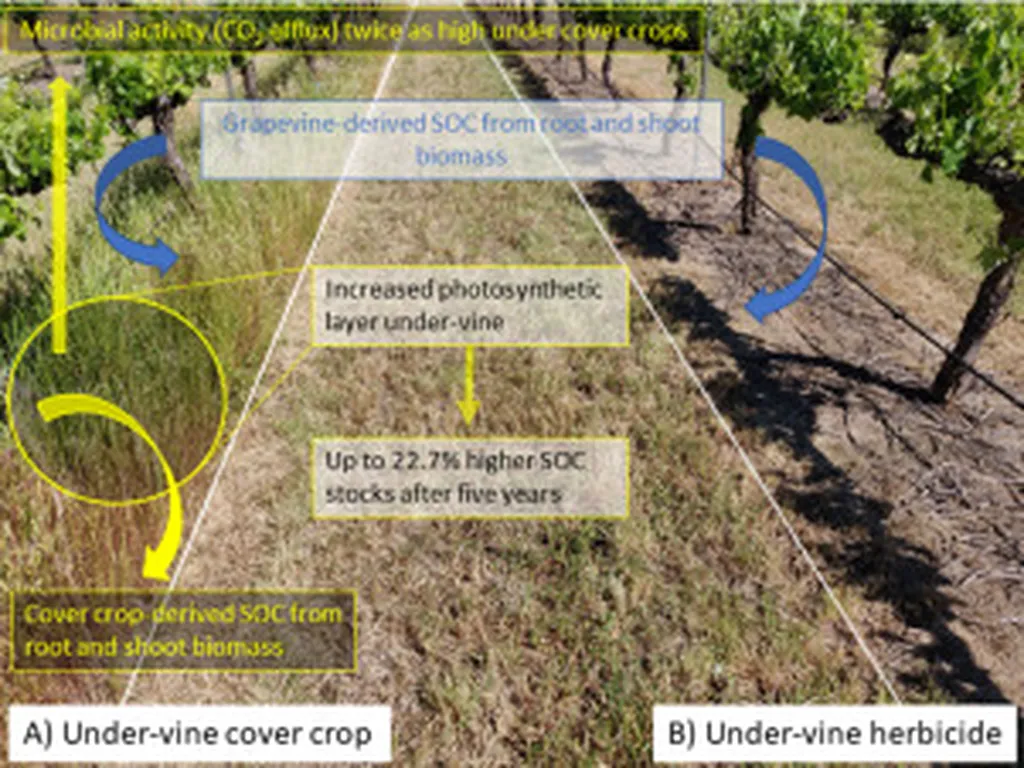In the heart of southwestern France, where the sun-kissed vineyards and rolling fields are a testament to the region’s rich agricultural heritage, a new study is shedding light on the delicate balance between carbon storage and water availability. The research, led by Taeken Wijmer from the CESBIO at the University of Toulouse, is making waves in the agritech world, offering insights that could reshape how we approach cover cropping and its impact on the energy sector.
Cover crops, those unsung heroes of sustainable agriculture, are known for their ability to maintain and even improve the carbon balance of agricultural soils. They’re a key player in the fight against climate change, but their water usage is a contentious issue. “Replacing bare soil with cover crops can increase transpiration and potentially reduce the water available for subsequent cash crops,” explains Wijmer. This is a significant concern in regions like southwestern France, where water resources are already limited and expected to diminish further with climate change.
The study, published in the journal ‘Remote Sensing’ (translated from French as ‘Remote Sensing’), employs a novel approach to tackle this issue. By combining modeling, remote sensing, and data assimilation, the researchers have developed a tool called AgriCarbon-EO. This tool estimates cover crop biomass production and the components of the water and carbon cycles at a decametric resolution, providing a detailed and accurate picture of the situation on the ground.
The results are intriguing. The study found that while cover crops do increase evapotranspiration, their impact on soil water content is minimal due to spring precipitation. This is a crucial finding for the energy sector, as it suggests that cover crops can be used to enhance carbon sequestration without significantly impacting water availability.
The study also quantified the amount of humified carbon added to the soil by cover crops at the pixel level, with amounts ranging from 40 to 130 gC·m−2 for most of the considered pixels. This information could be invaluable for energy companies looking to invest in carbon offset projects, as it provides a clear picture of the potential carbon benefits of cover cropping.
The research also highlights the significant variability in cover crop phenology and above-ground biomass, underscoring the need for tailored approaches to cover cropping. This could open up new opportunities for agritech companies to develop innovative solutions that cater to the specific needs of different regions and soil types.
As we look to the future, this research could shape the development of new tools and technologies that help us strike a balance between carbon storage and water availability. It could also pave the way for new policies and practices that promote sustainable agriculture and support the energy sector’s transition to a low-carbon future.
In the words of Wijmer, “This study is just the beginning. It opens up new avenues for research and offers a promising tool for enhancing carbon sequestration in agricultural soils.” And as we stand on the precipice of a new era in agriculture and energy, these are words worth heeding.

